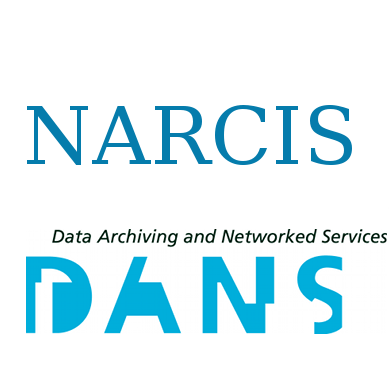Focal point
Location
National Academic Research and Collaborations Information System (NARCIS) is the main Dutch national portal for those looking for information about researchers and their work. NARCIS aggregates data from around 30 institutional repositories. Besides researchers, NARCIS is also used by students, journalists and people working in educational and government institutions as well as the business sector.
NARCIS provides access to scientific information, including (open access) publications from the repositories of all the Dutch universities, KNAW, NWO and a number of research institutes, datasets from some data archives as well as descriptions of research projects, researchers and research institutes.
This means that NARCIS cannot be used as an entry point to access complete overviews of publications of researchers (yet). However, there are more institutions that make all their scientific publications accessible via NARCIS. By doing so, it will become possible to create much more complete publication lists of researchers.
In 2004, the development of NARCIS started as a cooperation project of KNAW Research Information, NWO, VSNU and METIS, as part of the development of services within the DARE programme of SURFfoundation. This project resulted in the NARCIS portal, in which the DAREnet service was incorporated in January 2007. NARCIS has been part of DANS since 2011.
DANS - Data Archiving and Networked Services - is the Netherlands Institute for permanent access to digital research resources. DANS encourages researchers to make their digital research data and related outputs Findable, Accessible, Interoperable and Reusable.
Members:
Resources
Displaying 96 - 100 of 1863Cross-cutting challenges to innovation in land tenure documentation
Since around 2011 pilot projects to innovate land tenure documentation are being implemented in various countries in the global south in order to address the shortcomings of formal land registration. A longer-term question, underlying the present study, is how these innovations relate in the longer run to existing institutional arrangements of land governance in the respective context of implementation. Guided by this more general question, we discuss in this paper first the characteristics for 6 of these approaches.
Its4land - Innovative geospatial tools for fit-for-purpose land rights mapping
Mapping millions of unrecorded land rights in large parts of Sub-Saharan Africa remains a challenge. The results of many existing ICT-based approaches for recording these rights have often proven to be inappropriate; therefore, a new generation of tools needs to be developed to map land rights faster, cheaper, easier, and more responsible. This is the main goal of its4land, a European Commission Horizon 2020 project that aims to develop innovative tools that respond to the continuum of land rights, fit-for-purpose approach, and provide cadastral intelligence.
Attributing Changes in Streamflow to Land Use and Climate Change for 472 Catchments in Australia and the United States
A data-based method to distinguish climate and land use change impacts on streamflow has been previously developed and needs further evaluation through a large sample study. This study aims to apply the method to a large sample set of 472 catchments in the United States and Australia. The method calculates the water and energy budget of a catchment which can be translated to climate and land use induced changes in streamflow between two periods: a pre-change and post-change period.
Towards Cadastral Intelligence?: Extracting visible boundaries from UAV data through image analysis and machine learning
The inability to access formal land registration systems fosters insecure land tenure and conflicts, especially in developing countries. This calls for low-cost and scalable mapping solutions aligning with fit-for-purpose land administration. The work presented in this article supports the UAV-based mapping of land tenure inspired by state-of-the-art approaches from remote sensing, geoinformatics and computer vision.
The role of institutional actors and their interactions in the land use policy making process in Ethiopia
This study investigates the role of the different institutional actors involved in the development and implementation of land use policies in the Ethiopian Rift Valley. The work is based on interviews with key informants from different administrative levels and these results are compared to the relevant policy documents. While the constitution prescribes a participatory policy development process, our results show that in reality policies are made at the highest level and implemented in a top-down approach from the higher to the lower administrative levels.


